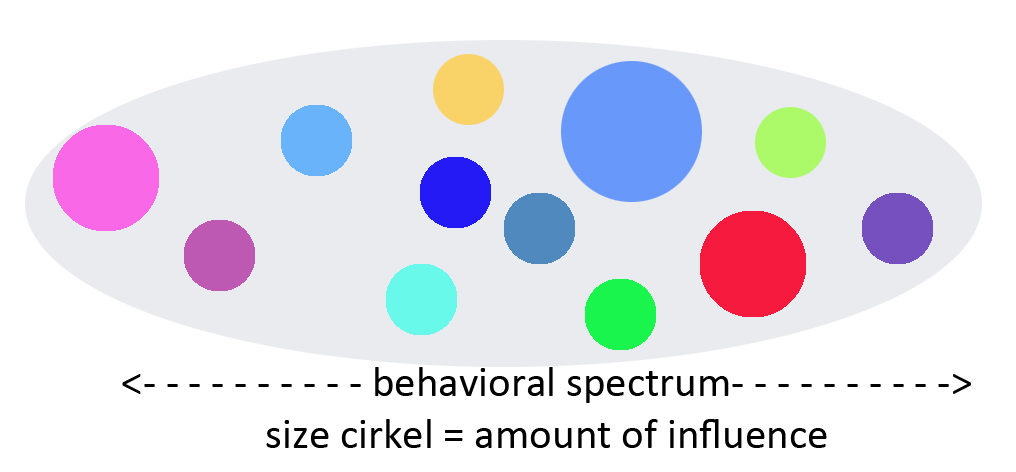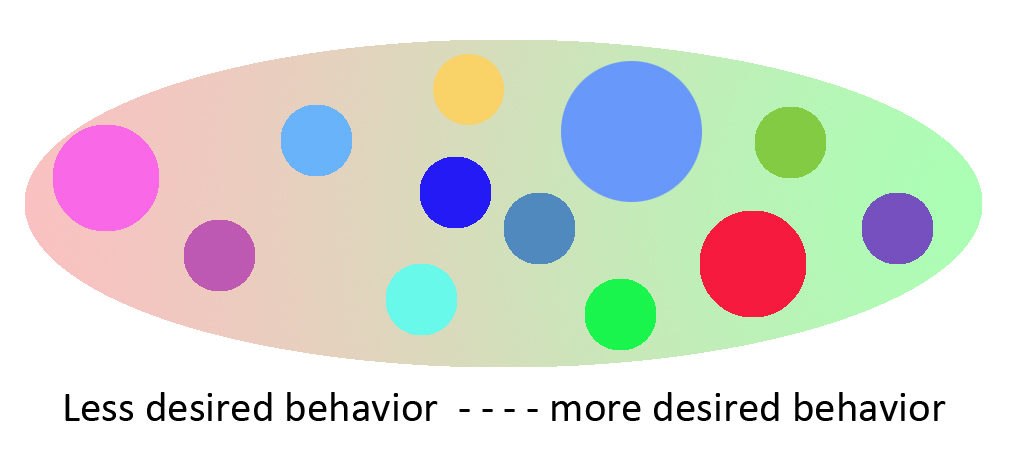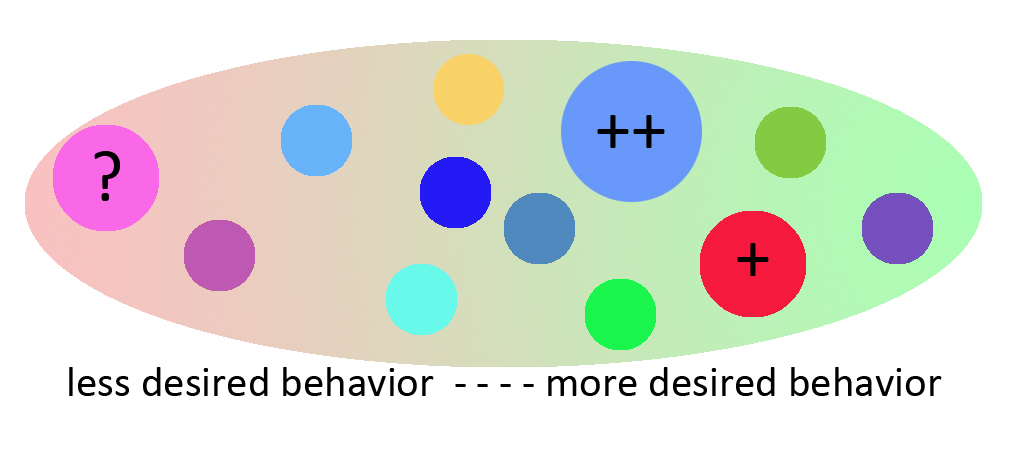Topic letter 31
The complexity of cultural change 2
This is the second blog about changing collective behavior within an organization. The first blog was about questions like what is a culture, how does it develop and why are projects for changing an organizational culture often so complex and unsuccessful. This blog is about how culture can actually start to change and how this process can be guided in a desired direction.
Conclusions from the previous blog
Culture is created within a group because everyone acts as a model for everyone else, and imitation results in mutual appreciation. Culture operates at an unconscious level and has an inbuilt rewarding system: social connection. Modeling creates a nearly closed system that is self-reinforcing. Besides that, stable behavioral patters are hardly affected by discussing them. For this reason a culture is somewhat resistant to external influences.
The point of application of a culture
The question is where we can find a point of application by which we can influence an existing culture. If the force by which people mutually model each other’s behavior is so strong, it is senseless to fight it. The question can be reformulated thus: how can we use the power of model behavior in order to change a culture? This way of formulating presents us with two approaches: model and behavior. Both can be applied.
Playing with models

Within a group, there is always a pecking order, neatly formulated a hierarchy in the attractiveness of models. Rephrasing George Orwell's 1984: all models are equal but some are more followed than others. This provides some limited scope for management because the attractiveness of models can be slightly influenced from outside. A first step in influencing behavior is therefore the mapping of the informal leaders, those who have more influence than others.
Playing with behavior

The second element is behavior. Our brain is so constructed that it is much easier to learn new behavior than to get rid of an old one. The focus therefore should be on reinforcing desired behavior, hoping that the undesired one will slowly fade away. Furthermore, we can benefit from the fact that even in a homogeneous culture, there still exists a certain diversity of behavior. Within the behavioral spectrum one variant is usually more desirable than the other. Strengthening the already existing desired behavior is a next step in orchestrating behavioral change. This requires an active attitude from those who want to change behavioral patterns.
Select desired models

The next step consists of further reinforcing the models based on the presence of desired behavior. Desired models are both attractive for the group (they have model value) ánd for management (they express the desired behavior). In this further selection, the organization will undoubtedly encounter formal leaders who owe their position to former and now less desirable behavior. An organization which really wants to change culture will have to follow suit here. As long as undesired models fulfill important positions in an organization, cultural change will be stillborn.
Reinforce desired models

Cultural change by using the power of model behavior is going to work if we can make the desired models stronger, by for example, giving them more influence, power and prestige. By doing this, others will perceive them as more important models of behavior. If e.g. we find safety important, we can reselect the team leaders and choose only those who have shown real concern for safety issues in the past.
Activating desired behavior

Furthermore, we can start to elicit and strengthen desired behavior in a targeted manner. If e.g. we find cooperation important, then we can create interesting assignments that can only succeed by cooperating beyond departmental boundaries. By doing this, the desired models show the desired behavior, which will be copied by others at an unconscious level.
Perpetuate desired behavior

Once the flywheel of the desired behavior has started, we enter a new phase. Then we can constantly activate this behavior so that it becomes part of our routine repertoire. One of the known methods for this purpose is called priming. Although the term may be unfamiliar, the working principle certainly isn’t. Priming is widely used in the advertising world and makes use of associations in order to cultivate desired behavior at an unconscious level. Another technique is the so-called narrative approach, in which we reinforce behavior through vivid stories. Images, more than words, have a stronger impact on our unconscious processes because they are more closely related to our emotions. By employing and combining all the above instruments the culture of an organization can move harmoniously step by step in a more desired direction.
Juni Daalmans
November 2013 Brain Based Safety
More information on brain based safety can be found on www.brainbasedsafety.com and in the book "Human Behavior in Hazardous Situations. Best Practice Safety Management in the Chemical and Process Industries." 2012 Elsevier
It's also possible to receive a topic letter alert. Just subscribe yourself via www.brainbasedsafety.com.